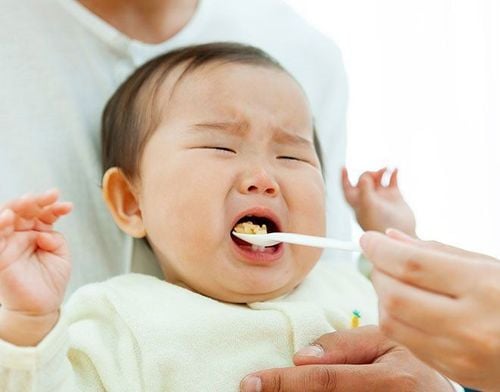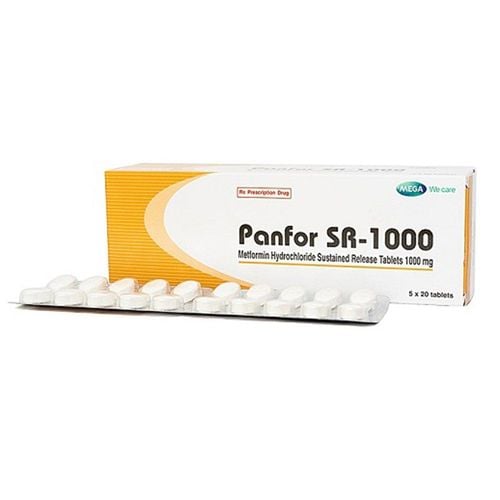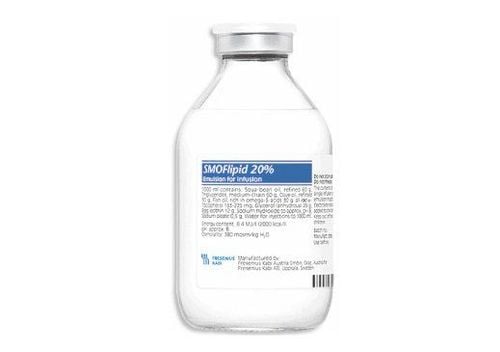This is an automatically translated article.
When it comes to eating disorders in children, early detection and prevention are always key. Accordingly, parents must recognize the signs of a 10-month-old child being lazy to eat in order to promptly adjust, because at this stage the child is following a weaning diet. Early improvement will help the baby absorb well and ensure the child's development at each stage.
1. The cause of the 10-month-old child being lazy to eat
Pediatric behavioral researchers do not yet know what causes eating disorders in young children. However, factors that increase the risk of eating disorders have been identified in children as early as the weaning age.
Accordingly, eating disorders can be inherited. So, if a child's parent, sibling or other relative has an eating disorder, the child is also 7-12 times more likely to develop an eating disorder than another child. In addition, children diagnosed with chronic diseases or birth defects are also at higher risk, especially those diagnosed with insulin-dependent diabetes. In addition, children with signs of depression, anxiety and other mental illnesses also have a higher risk of developing an eating disorder.
In particular, in the group of children around the 12-month-old milestone, eating disorders in toddlers are partly caused by the weaning diet. 10 months old baby eating suckling porridge is when the child has not yet tolerated when switching from drinking milk completely to solid food. The pain caused by teething also causes 10-month-old babies to eat porridge. At the same time, the difficulties, inexperience and psychological pressure of parents when taking care of children eating is also a cause but is rarely recognized.

Giải đáp trẻ 10 tháng biếng ăn phải làm sao?
2. Signs of an anorexia 10 month old baby
Consumption disorders in children under 10 months of age are usually caused when children experience disturbances in their eating, which may include disinterest in food or a distaste for certain foods. certain food. For example, a 10-month-old baby eating porridge may be because he does not like to swallow or the texture of the solid food is different from the liquid milk he is used to. In addition, children may also be afraid to eat because solid foods make it difficult for them to swallow or vomit easily. These dietary restrictions may lead to weight loss and nutritional deficiencies in young children.
At this point, early detection and prevention are the key to treating eating disorders in infants. The signs are often very subtle and should be suspected when the early warning signs are present, including:
Fear of eating, irritability Abdominal pain, nausea when it's time to eat Aversion to unfamiliar foods or changes in texture food Weight loss, slow growth Thin hair Constipation or other digestive problems

Dấu hiệu của trẻ 10 tháng biếng ăn là sợ ăn
3. 10 month old anorexic what to do?
There are many directions in the treatment of eating disorders in young children in general or 10-month-old children in the age of weaning in particular. All for the purpose of regaining weight or body growth for children, which is an essential part of restoring children's physical health and nutrition. Because parents and carers play an important role in a child's life, family-based interventions and treatment are often encouraged. Parents often rarely realize their own role in their child's eating disorder, so parents need to be more confident to actively adjust their child's eating behavior for better outcomes. At that time, children will improve and make more progress in their eating behavior, both exposing them to different foods and seeing meals as an interesting activity to explore every day. day.
Ways to help improve the condition of a 10-month-old child who is lazy to eat are as follows:
Teach your baby to feel internal body signals such as hunger or satiety. Parents model a variety of foods for children to imitate. Prioritize choosing foods rich in energy and nutrients necessary for healthy physical activity and growth according to the weight and height chart in young children. Follow the rules for designing children's menus every day, including a clear division between meals. Encourage your baby to choose his or her own foods and how to eat them, a form of self-directed weaning. Limit giving your baby breast milk or formula so that your baby can cooperate with solid foods. Do not abuse synthetic nutritional supplements. If applying the above measures after a period of time is not effective, the child is slow to gain weight or malnourished, parents need to quickly contact a pediatrician, nutritionist for support and get advice. best care for children. Furthermore, a course on how to create a healthy diet for children will make parenting easier and will benefit the child's whole life. So, even if it is uncertain whether a 10-month-old baby may have problems with suckling porridge, it is never redundant to contact the experts, as this will help parents get help. help children improve anorexia in young children.
In summary, physical growth is an important component of childhood and eating disorders can cause significant damage to a child's body. Accordingly, when a 10-month-old child is lazy to eat, parents need to detect it early and promptly adjust it, giving them the right eating habits. In addition, when a 10-month-old child eats porridge, changing foods flexibly is also a basic way to stimulate the child's appetite. In particular, the baby also needs to be supplemented with necessary micronutrients: Zinc, selenium, chromium, vitamins B1 and B6, ginger, acerola fruit extract (vitamin C), ... to improve taste, eat delicious , reach the right height and weight and exceed the standard, have a good immune system, strengthen the resistance to get sick less often and have less digestive problems.
Please regularly visit Vinmec.com website and update useful information to take care of your baby and family.
Reference source: momjunction.com - nhs.uk - childadvocate.net













